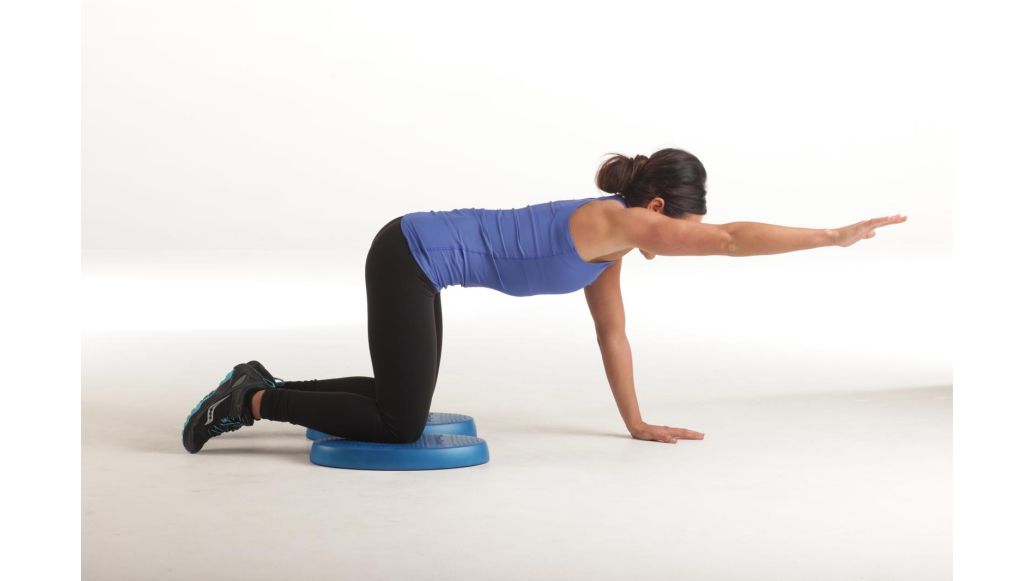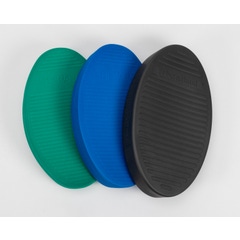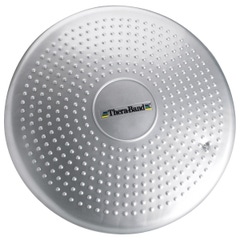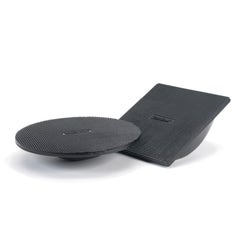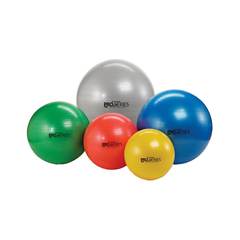Key Takeaways
- Exercise can help improve your balance, reduce your risk of falls, and promote your overall safety & wellbeing
- If you exercise regularly, incorporate exercise products like stability discs or wobble boards into your daily balance training routine
- To avoid feeling unsteady, use these 9 exercises to improve your balance and move through your day with ease
Top Products in This Article
Losing your balance is a part of life. It happens all the time. As we get older, however, things such as vision problems, inner ear problems, or weakened hips and ankles can throw off our balance more often.
Here are 9 exercises to help you improve your ability to control and maintain your body's position!
- How does poor balance affect people?
- 4 Balance Exercise Products
- 9 Exercises to Improve Balance
- Conclusion
How does poor balance affect people?
Seniors
Difficulty balancing can lead to falls, which are common in seniors. Parts of the inner ear and brain (the vestibular system) that control balance and vision decline as we get older. The ability to know where you are in space, called proprioception, gradually becomes worse.
1 in 3 adults over the age 65 fall each year, often resulting in serious injuries such as head injuries, hip fractures and other broken bones.1 Conditions such as arthritis, Alzheimer’s disease, Parkinson’s disease, multiple sclerosis, and heart disease can reduce the ability to stay balanced and move freely.
Pregnancy and Weight Changes
Balance exercise can also benefit those who have gained or lost significant weight or those who become pregnant, which can throw off their center of gravity.
Athletes
Balance can also help athletes maintain balance during their sport activity and reduce potential injuries. If an athlete sprains their ankle, they could be at risk for reinjury if they don't retrain their balance.
4 Balance Exercise Products
Here are four exercise products to help strengthen the core and lower body muscles that keep you steady on your feet.
- Stability Trainers: Made to be used for balance and proprioception training, core, upper and lower extremity strength training, and flexibility training. One surface has rounded points to provide tactile input for sensorimotor training and the opposite surface has anti-skid bars to resist slipping during balance training. Available in three resistance levels: Beginner (Firm), Intermediate (Soft), and Advanced (Extra Soft).
- Stability Disc: Made to be used as a progressive stability product, effective core exerciser and seat cushion for your home, work or travel. The unstable and sensory-stimulating surface facilitates automatic postural reactions while sitting. This feature helps activate core muscles and encourages proprioception during exercise or dynamic sitting. The disc can also be stood on for extra difficult balance training.
- Rocker and Wobble Boards: The single, controlled plane of the rocker board is perfect for beginners in stability training. The multiplane wobble board offers users 360° of instability for balance training, injury or surgery recovery, and conditioning. The textured top is designed to provide pressure points that stimulate and enhance sensory perception.
- Exercise Balls: Exercise balls come in a progressive color scheme to indicate the different ball sizes. Safe to lie, sit, or kneel on while exercising the core, back, shoulder, and leg muscles. These exercise balls can be used to improve balance and also to reduce or prevent back pain caused by muscle imbalance.
9 Exercises to Improve Balance
For effective training to improve and enhance your balance, progress from basic to advanced exercises. The increase in training intensity should be tailored to individual performance so that the exercises are always performed safely and correctly. Make sure to maintain correct posture and conduct movements in a slow, controlled manner in the initial position, during the exercise, and at the end.
Back Extension with Exercise Ball
- Lie facedown with the exercise ball under your hips and lower torso. You can rest on your knees or on your toes with the knees straight.
- Place your hands under your chin, elbows bent. Roll forward over the ball and then contract your lower back to lift your chest off the ball.
- Try bringing your shoulders up until your body is in a straight line. Do this back extension 10 times.
Glute Bridge with Exercise Ball
- Sit down on the exercise ball and move forward with your feet. Simultaneously tilt your upper body back until the ball is placed between your shoulder blades.
- Bend the legs to 90 degrees with the feet hip width apart. Lower the hip without touching the ground.
- Lift the pelvis until your body is parallel to the ground. Do this glute bridge 10 times.
Split Squat with Stability Disc
- Place a stability disc on the floor behind you. Lift one leg off the ground and place your distal foot on top of the stability disc.
- Balance on your other foot with your knee and toe straight.
- Squat down in a slow and controlled motion until your knee almost touches the ground.
- Make sure your legs are far enough apart so that your knee does not go past your toes when you squat. Do this split squat 10 times before switching legs.
Donkey Kick with Stability Disc
- Get on all fours with your left knee on the stability disc and your right knee on the floor beside it.
- Lift your right knee to hip height behind you and pause.
- Lower your right leg back down to starting position. Do this donkey kick 10 times before switching legs.
Reverse Lunge Raise with Stability Disc
- Stand with feet hip-width apart on the stability disc, arms extended at your sides and palms facing legs.
- Step back with your right leg into a deep lunge.
- Rise up, lifting your right knee to hip height in front of you as you raise arms to shoulder height.
- Pause and then slowly return to starting position. Do this reverse lunge 10 times before switching legs.
Squats with Rocker Board
- Start in a standing position but move your feet a few inches toward the edges of the rocker board (a little wider than hip-distance apart).
- Slowly bend at your knees into a squat position with arms extended in front of you. Pause for 3-5 seconds.
- Push through your heels and rise up to standing position. Do this squat 10 times.
Push-Ups with Rocker Board
- Start on the floor in a push-up position with your hands on the rocker board, slightly wider than shoulder-width apart. Your feet will be behind you and your body a straight line.
- Engage your core muscles and keep your head looking forward. Bend your elbows and slowly lower yourself as far as you can go while keeping your body in a straight line.
- Pause and return to the starting position. Do this push-up 10 times.
Bird Dog with Stability Trainer
- Get down on all fours with a stability trainer under your right knee.
- Extend and flex the left leg behind you. Then extend the opposite (right arm) in front of you.
- Pause for 3-5 seconds before returning to starting position. Do this bird dog 10 times before switching and moving the stability trainer under your left knee.
Running Man
- Standing on the stability trainer with your left foot, lift your right leg so that your thigh is parallel to the floor, and you’re standing on one leg.
- Bend your arms in a running stance, so that your right arm is bent in front of your torso and your left arm is bent behind your torso.
- In one smooth motion, extend your right leg behind you, leaning forward with your torso and extending your right arm forward and left arm back.
- Return to starting position. Do this running man 10 times before switching legs and moving the stability trainer under the right foot.
Conclusion
Balance exercise is one of the four key types of exercise in addition to strength, endurance and flexibility. Benefits of balance exercise include:
- Prevents falls
- Reduces the risk of lower extremity injuries
- Improves proprioception
The focus of balance exercise is to strengthen the core. Building the abdominal muscles help you feel centered. Before each move, engage your abdominals by tightening them—without holding your breath. You'll activate the core muscles surrounding your spine and tone your entire abdominal area.
Start improving your balance now!
References:
1. Freytag, Chris. (2020). 5 Exercises for Better Balance. VeryWell Fit. Retrieved from https://bit.ly/2QofWR3
2. Hernandez, Brandi. (2019). 3 Exercises to Improve Your Balance. Baton Rouge Clinic. Retrieved from https://bit.ly/3dRUxIT
Medical Disclaimer: The information provided on this site, including text, graphics, images and other material, are for informational purposes only and are not intended to substitute for professional medical advice, diagnosis or treatment. Always seek the advice of your physician or other healthcare professional with any questions or concerns you may have regarding your condition.








 France
France Australia
Australia